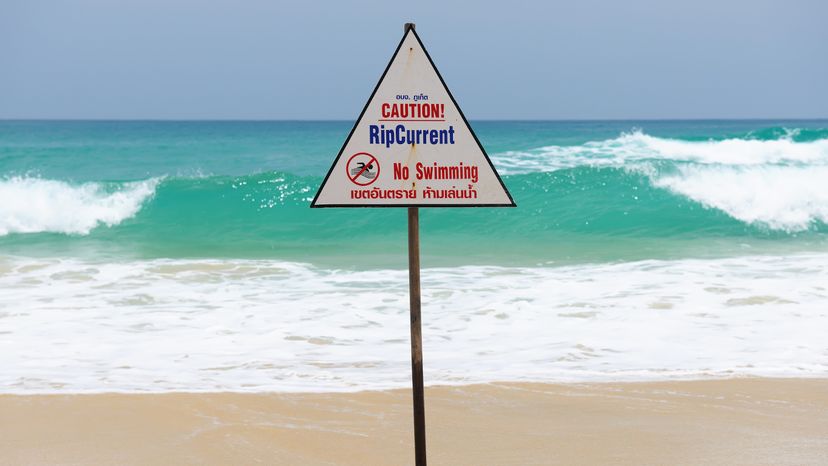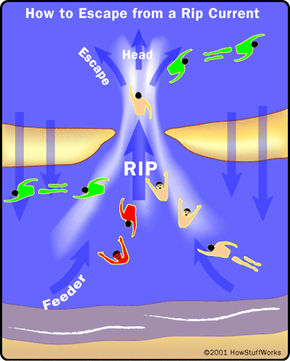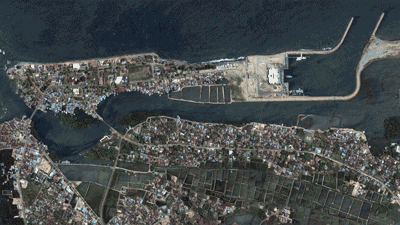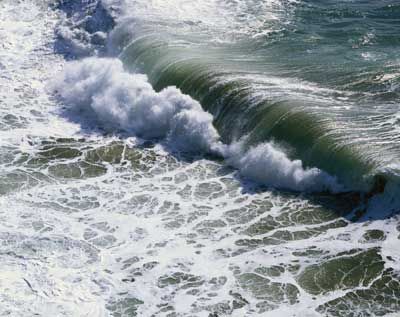In the last section, we saw that rip currents occur when water rushes through a low point in a sandbar. Since waves keep pushing more water into the basin between the sandbar and the beach, the rip current may continue for several minutes, or even several hours. Some rip currents are brief occurrences, but others are long-term fixtures of an area.
Typically, the strongest part of a rip current is the direct line between the water's edge and the sandbar opening, but the current will also pull in surrounding water from each side of the basin. In this way, a rip current might pull you sideways, parallel to the beach, before it pulls you outward, away from the beach.
Once the receding wave makes its way through the sandbar opening and meets up with water at its own level, its pressure immediately drops. Overall, the water flow pattern has a mushroom shape.
Depending on its severity, you may be able to see a rip current from the beach. Strong rip currents disrupt incoming waves and stir up sand from the ocean floor. When you're at the beach, keep an eye out for narrow, muddy streaks in the ocean where there aren't any waves breaking.
If you get caught up in a rip current, it's crucial that you keep your wits about you. Your first instinct may be to swim against the current, back to shallow waters. In most cases, even if you're a strong swimmer, this will only wear you out. The current is too strong to fight head-on.
Instead, swim sideways, parallel to the beach (see illustration below). This will get you out of the strong flow of the narrow outward current, so you can swim back in with the waves helping you along. If it's too hard to swim parallel while you're being dragged through the water, just wait until the current carries you past the sandbar. The water will be much calmer there, and you can get clear of the rip current before heading back in.
People drown when they thrash about in the water or expend all of their energy swimming. According to the United States Lifesaving Association, to survive a rip current, or any crisis in the water, you have to keep calm, and you have to conserve your energy. If you don't think you can swim all the way back to the beach, get past the rip current and tread water. Call for help, signal to people on the beach and, if all else fails, wait for the waves to carry you in.
If you're on the beach and see somebody else caught in a rip current, call for help from a lifeguard or the police. Don't immediately dive in and swim out to the person. It's too risky to swim out there yourself unless you have a raft, boogie board or life preserver with you.
The most effective way to fight rip currents is to follow basic swimming safety rules: Never go in the ocean alone, and if you aren't a strong swimmer, stick to shallow waters (although even shallow waters can be dangerous). Ideally, you should only swim in areas where there is a lifeguard or strong swimmer on the beach who can keep an eye on you.
If you plan to swim in the ocean anytime soon, it's a good idea to learn everything you can about rip currents. After all, they are the beach's number-one killer.
To find out more about rip currents and ocean safety, check out the links that follow.



